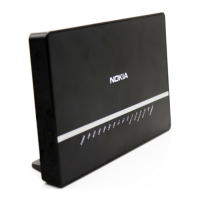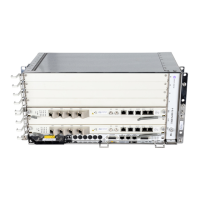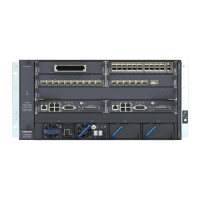Services Overview
74
FD 100/320Gbps NT and FX NT IHub Services Guide
3HH-11985-AAAA-TQZZA Issue: 13
In the above example, the IP address 10.0.0.1 is the address of the GRE tunnel
endpoint from the perspective of the payload IP packets. This address belongs to the
address space of the VPRN 1 service and is not exposed to the public IP network
carrying GRE encapsulated packets. An IP interface associated with a private tunnel
SAP does not support unnumbered operations.
3.14.3 GRE Tunnel Configuration
To associate a GRE tunnel with a private tunnel SAP, the GRE tunnel object should
configured under the SAP. When creating a GRE tunnel, the “to” keyword followed
by the private IP address of the remote tunnel endpoint is mandatory. If this remote
IP address is not within the subnet of the local private endpoint then the tunnel will
not come up. In the CLI sub-tree under GRE tunnel, configure the following
commands:
• The source address of the GRE tunnel
This is source IPv4 address of GRE encapsulated packets sent by the delivery
service. It must be an address in the subnet of the associated public tunnel SAP
interface.
• The remote IP address
If this address is reachable in the delivery service (there is an existing route) then
this is the destination IPv4 address of the GRE encapsulated packets sent by the
delivery service.
• The delivery service
This is the ID or name of the IES or VPRN service where GRE encapsulated
packets are injected and terminated. The deliver service can be the same service
where the private tunnel SAP interface resides.
The DSCP marking in the outer IP header of GRE encapsulated packets. If this
marking is not configured, the default setting is to copy the DSCP from the inner IP
header to the outer IP Header.
The show gre tunnel command allows the operator to view information about either
specific or all configured GRE tunnels. This command displays the following
information for each tunnel:
• service ID that owns the tunnel
• private tunnel SAP that owns the tunnel
• tunnel name
• source address
• remote IP address
• local (private) address
• destination (private) address
• delivery service: only ID (int value) allowed
• DSCP
• admin state

